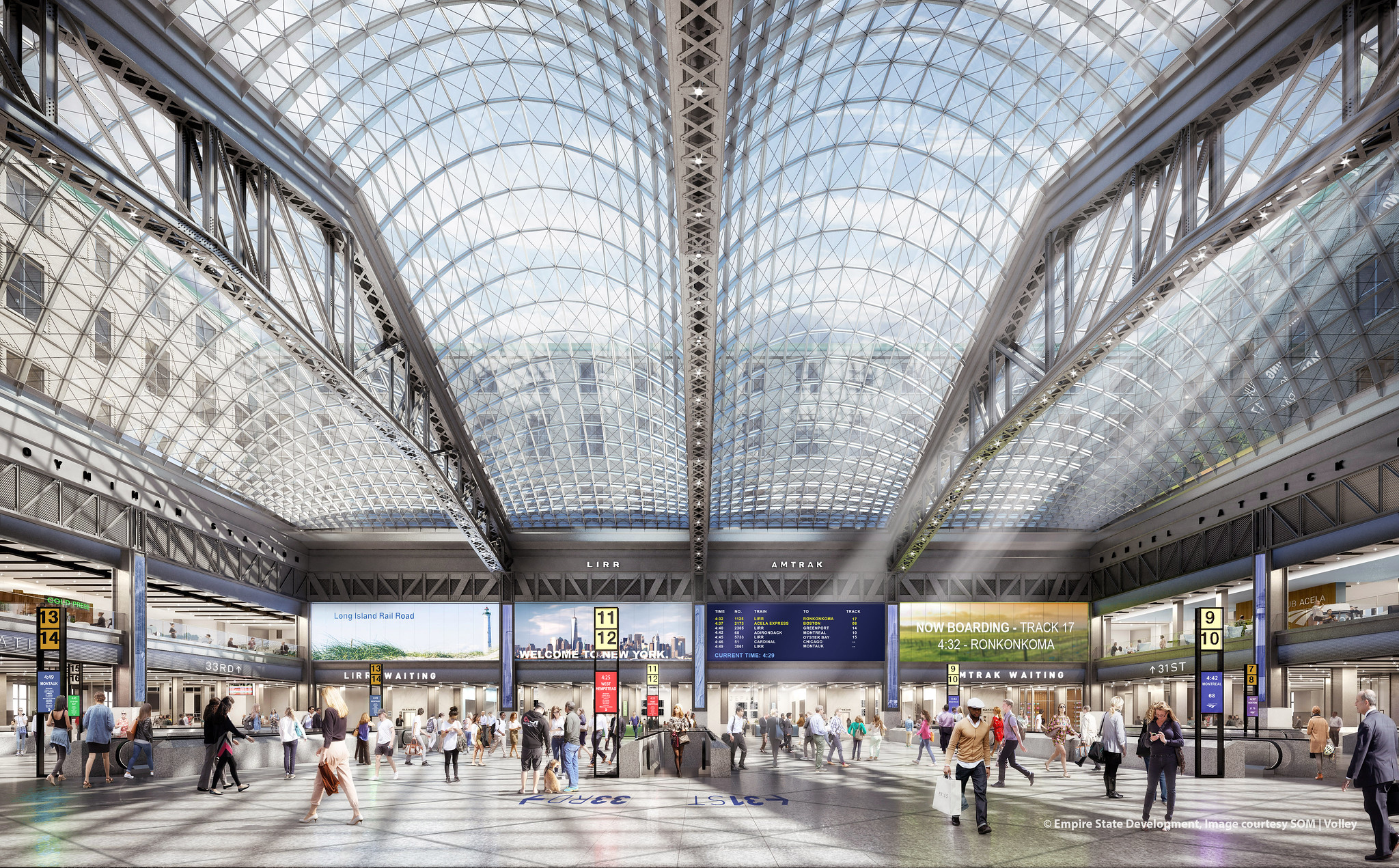
NEW YORK CITY — Gov. Andrew Cuomo's $1.6 billion plan to redevelop the Farley Post Office and fix Penn Station doesn't go far enough to eliminate the infrastructure problems at one of the regions busiest transportation hubs, experts say.
Under Cuomo's proposal announced last week, the James A. Farley Post Office will become the new Moynihan Train Hall as part of a $1.6 billion revamp.
It will be connected to a repaired Penn Station that would triple the width of the busy Long Island Rail Road 33rd Street corridor and improve the two subway stations located at Penn Station as part of a $50 million upgrade.
The design would add an LED ceiling painted to look like a blue sky to Penn Station to end the feeling of claustrophobia in its corridors. The portion of Amtrak's facilities that will remain in Penn Station will also be redesigned.
► READ MORE: 'Blue Skies' Coming to New Penn Station to Fix 'National Laughingstock'
Cuomo said the improvements will end a failed two-decade effort to redevelop the post office into a transit hub and make sure Penn Station is no longer a "national laughingstock."
While the Regional Plan Association and Municipal Art Society praised Cuomo's plans as addressing "some of Penn’s most visible deficiencies" while ensuring "that Moynihan Station is built...soon" the project "won’t go far enough" to fix the real problem at the transit hub — the overwhelming need for new tunnels and new tracks.
Image courtesy of Office of Gov. Andrew Cuomo
In order to plan for the future of transportation in the city, all Penn Station stakeholders should commit to building the Gateway Tunnel under the Hudson River which connects with New Jersey, commit to critical track and platform improvements, and create a future development plan for Midtown West, the groups said Monday.
The Gateway Tunnel is "the single most important infrastructure investment in the nation, and needs to move ahead immediately," they said in a statement.
Along with building the Gateway Tunnel, Amtrak and the Port Authority should "examine operations at Penn Station and study alternatives" such as running trains on routes not currently in effect, integrating routes and improving the scheduling and frequency of trains "that could improve efficiency at the station and provide greater regional connectivity."
Finally, a plan should be organized for developing Midtown West that takes historic preservation into account along with future growth.
"To that end, it is imperative that we not simply address immediate needs at Penn Station, but holistically and intentionally plan for the long-term future of our city and region," they added.
Abby Fashouer, a spokeswoman for Cuomo, said "after 20 years of stalled plans" the project is finally moving along.
"While an open dialogue is central to the success of this project, simply talking about it has gotten us nowhere," she said.
Cuomo's $100 billion, statewide plan for infrastructure includes "the rapid completion of a new Gateway Tunnel." In 2015, Cuomo, New Jersey Gov. Chris Christie and Sen. Chuck Schumer announced a plan for funding of the tunnel.
In addition, a completed Moynihan Train Hall, which will include 112,000 square feet of retail and 588,000 square feet of office space, could serve as a spark to help develop Midtown West, said David Fernández, a public finance attorney with Buchanan, Ingersoll & Rooney PC.
But the Regional Plan Association and Municipal Art Society are correct in their criticism of the complex, he added.
"They are putting lipstick on a pig because the problem with Penn Station is the infrastructure and tracks, the ability to get in and out," said Fernández who has counsel for the state's Dormitory Authority and for the city's Housing Development Corporation. "They are are not talking about additional tunnels that make the station more usable."
Penn Station already handles 650,000 passengers per day, more than double the daily traffic at John F. Kennedy, LaGuardia and Newark Liberty International airports combined. The current capacity is triple what the station was designed for.
Funding should go toward fixing existing signals and 100 year old tunnels from Manhattan to Queens and New Jersey which cause constant delays.
Either way, billions of dollars in transportation infrastructure money will have to flow from Washington, D.C. to make some of the much-needed infrastructure projects a reality.
"Everyone wants Penn Station to look beautiful but they'd rather get home on time for dinner," said Fernández.




















